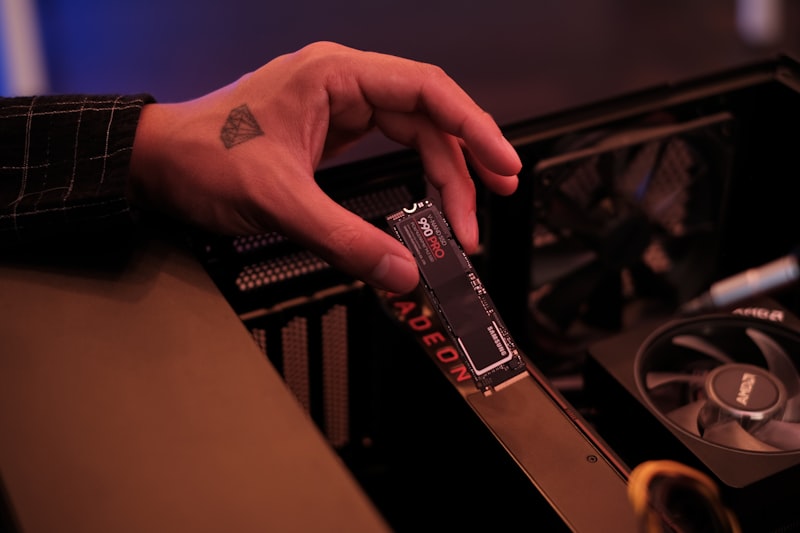Have you ever wondered what makes your brake lights illuminate when you press the brake pedal? That’s where the remarkable device known as a brake light switch comes into play. Acting as a crucial component in your vehicle’s braking system, the brake light switch ensures that the brake lights activate every time you apply the brakes, alerting other drivers on the road of your intentions.
So, what exactly is a brake light switch? Simply put, it is a small yet mighty electrical switch located near the top of the brake pedal assembly. When you press the brake pedal, it activates the switch, completing an electric circuit and causing the brake lights to turn on. This action effectively signals to the drivers behind you that you are slowing down or coming to a stop.
Think of the brake light switch as a gatekeeper, responsible for controlling the flow of electricity to your brake lights. It operates on a simple principle: when the brake pedal is in its resting position, the switch remains open, interrupting the circuit and keeping the brake lights off. However, as soon as you step on the pedal, the switch is triggered, closing the circuit and allowing electrical current to flow, thus illuminating the brake lights.
This ingenious mechanism not only enhances your safety on the road but also helps prevent accidents. By providing a clear visual indication of your braking actions, the brake light switch enables drivers following behind you to react promptly and adjust their driving accordingly. It serves as a vital communication tool, especially in low-light conditions or during adverse weather situations when visibility may be compromised.
The brake light switch is an unsung hero in your vehicle’s braking system. It plays a significant role in ensuring your safety and the safety of others on the road by activating the brake lights whenever you engage the brakes. So next time you hit the brake pedal, remember the small yet powerful brake light switch working diligently behind the scenes to keep you visible and protected.
Revolutionary Brake Light Switch Technology Unveiled: Enhancing Safety on the Roads
Imagine a world where every vehicle on the road is equipped with a brake light switch that can instantly detect when you’re slowing down or stopping. Thanks to groundbreaking advancements in automotive technology, this vision is becoming a reality. The latest innovation in the automotive industry is the revolutionary brake light switch technology, designed to enhance safety on our roads like never before.
Traditionally, brake light switches were simple mechanical devices that would activate the brake lights when you pressed the brake pedal. However, the new generation of brake light switches takes safety to a whole new level. These cutting-edge switches utilize advanced sensors and sophisticated algorithms to detect even the slightest change in velocity, providing immediate feedback to the drivers behind you.
One of the key advantages of this revolutionary technology is its proactive approach to road safety. By detecting deceleration and instantly illuminating the brake lights, it gives other drivers valuable time to react and adjust their driving accordingly. This not only reduces the risk of rear-end collisions but also helps prevent chain-reaction accidents on busy roads.
In addition to its primary function, the new brake light switch technology offers several other noteworthy features. For instance, it can be programmed to emit different levels of brightness based on the intensity of braking. In emergency situations, the brake lights can emit a more intense and attention-grabbing illumination, ensuring maximum visibility to surrounding vehicles.
Moreover, this breakthrough technology is designed to be highly reliable and durable. With its robust construction and advanced components, the brake light switch can withstand the harsh conditions of everyday driving, ensuring long-lasting performance and minimal maintenance.

The introduction of revolutionary brake light switch technology marks a significant milestone in improving road safety. By enhancing the visibility and signaling capabilities of vehicles, this innovation has the potential to save countless lives and prevent accidents. As more vehicles adopt this technology, we can look forward to safer roads and a more secure driving experience for everyone.

The revolutionary brake light switch technology represents a game-changer in the automotive industry. Its ability to detect deceleration and provide instant feedback to other drivers enhances safety on the roads like never before. With features such as adjustable brightness levels and durability, this technology sets new standards for road safety. Embracing this innovation is a crucial step towards creating a safer and more secure driving environment for all.
The Hidden Hero: How the Brake Light Switch Ensures Smooth Stopping and Saves Lives

Have you ever wondered what makes your car’s brake lights magically turn on when you press the brake pedal? It’s all thanks to a small but mighty component called the brake light switch. This unassuming hero plays a crucial role in ensuring smooth stopping and, most importantly, saving lives on the road.
Picture this: you’re driving down the highway, and suddenly, you need to make an emergency stop. You swiftly step on the brake pedal, and like magic, the bright red brake lights illuminate, alerting drivers behind you that you’re slowing down. But how does it work?
The brake light switch is typically located near the top of the brake pedal arm. When you press the brake pedal, it activates the switch, which completes the circuit and sends an electric signal to the brake lights, causing them to shine brightly. Without this switch, other drivers wouldn’t have a clue that you’re stopping, leading to potential accidents and chaos on the road.
Think of the brake light switch as a guardian angel, silently watching over you and your fellow drivers. Its importance cannot be overstated. By providing a visual cue to those behind you, it allows them to react accordingly and prevent rear-end collisions. Whether you’re coming to a complete halt or just slowing down, this tiny switch ensures that everyone on the road is aware of your intentions.
But its impact goes beyond everyday driving scenarios. Imagine driving through dense fog or heavy rain where visibility is drastically reduced. In these challenging conditions, the brake light switch becomes even more critical. It acts as a beacon of safety, cutting through the mist and alerting others to your presence. It provides reassurance and helps maintain order on the roads when external factors make driving treacherous.
The brake light switch may seem like a small and insignificant component, but its contribution to road safety is immeasurable. It ensures smooth stopping, prevents accidents, and ultimately saves lives. So, the next time you hit the brakes and see those bright red lights behind you, take a moment to appreciate the hidden hero that’s working diligently to keep everyone safe on the road.
Unveiling the Inner Workings of a Brake Light Switch: An Essential Component for Vehicle Safety
Have you ever wondered how your vehicle’s brake lights work seamlessly every time you press the brake pedal? It’s all thanks to a small but crucial component called the brake light switch. In this article, we will delve into the inner workings of the brake light switch and explore its significance in ensuring your safety on the road.
Think of the brake light switch as a vigilant sentinel, constantly monitoring your actions behind the scenes. Located near the brake pedal, this ingenious device is activated when you press down on the pedal, completing an electrical circuit that illuminates your brake lights. It may seem like a simple mechanism, but its role in preventing accidents cannot be underestimated.
When you apply pressure to the brake pedal, it pushes a plunger within the brake light switch. This plunger, in turn, closes the circuit, allowing electricity to flow through and activate the brake lights. As a result, drivers behind you are promptly alerted of your intention to slow down or stop, greatly reducing the risk of rear-end collisions.
Moreover, the brake light switch goes beyond merely illuminating the brake lights. It serves as a crucial link to other important safety systems in your vehicle. For instance, it plays a vital role in disengaging the cruise control feature when you step on the brakes, ensuring a smooth and controlled deceleration.
The inner workings of the brake light switch are a testament to its reliability and durability. Typically made of high-quality materials such as metal or plastic, this tiny component can withstand the repetitive forces exerted by the brake pedal without faltering. However, like any part of your vehicle, it may occasionally require replacement due to wear and tear.
The brake light switch is an unsung hero of vehicle safety, silently working behind the scenes to protect you and those around you. Its ability to activate the brake lights and trigger other safety systems ensures that your intentions on the road are clearly communicated to others. So, the next time you press that brake pedal, remember the remarkable inner workings of the brake light switch, keeping you safe with each push.
From Mechanical to Electronic: The Evolution of Brake Light Switches in Modern Cars
Introduction:
Have you ever wondered how those small brake lights on the rear of modern cars work when you press the brake pedal? It’s fascinating to see how technology has transformed even the simplest components of our vehicles. In this article, we’ll delve into the evolution of brake light switches, tracing their journey from mechanical to electronic systems. Join me as we explore the advancements that have enhanced safety and functionality in modern automobiles.
The Era of Mechanical Brake Light Switches:
In the early days of automotive engineering, mechanical brake light switches ruled the scene. These switches were simple yet effective devices, consisting of a metal lever connected to the brake pedal. When the pedal was pressed, the lever activated the switch, completing an electrical circuit and illuminating the brake lights. However, with time, engineers recognized the limitations of these mechanical switches.
The Rise of Electronic Brake Light Switches:
As technology progressed, mechanical switches gave way to electronic brake light switches. These innovative switches utilize sensors and microprocessors to detect brake pedal movement accurately. When the pedal is pressed, the sensor sends a signal to the microprocessor, which activates the brake lights. This electronic system offers several advantages over its mechanical counterpart.
Enhanced Safety and Functionality:
Electronic brake light switches provide improved safety features that ensure timely illumination of the brake lights. Thanks to their precise sensors, they can detect even the slightest pressure applied to the pedal, resulting in faster response times. This rapid activation of the brake lights alerts following drivers sooner, reducing the risk of rear-end collisions.
Additionally, electronic switches offer advanced functionalities such as adaptive braking systems. These systems use sensors to measure the force applied to the brake pedal, enabling the vehicle’s computer to adjust the braking power accordingly. This feature enhances control and stability during sudden stops or emergency situations, potentially preventing accidents.
Conclusion:
